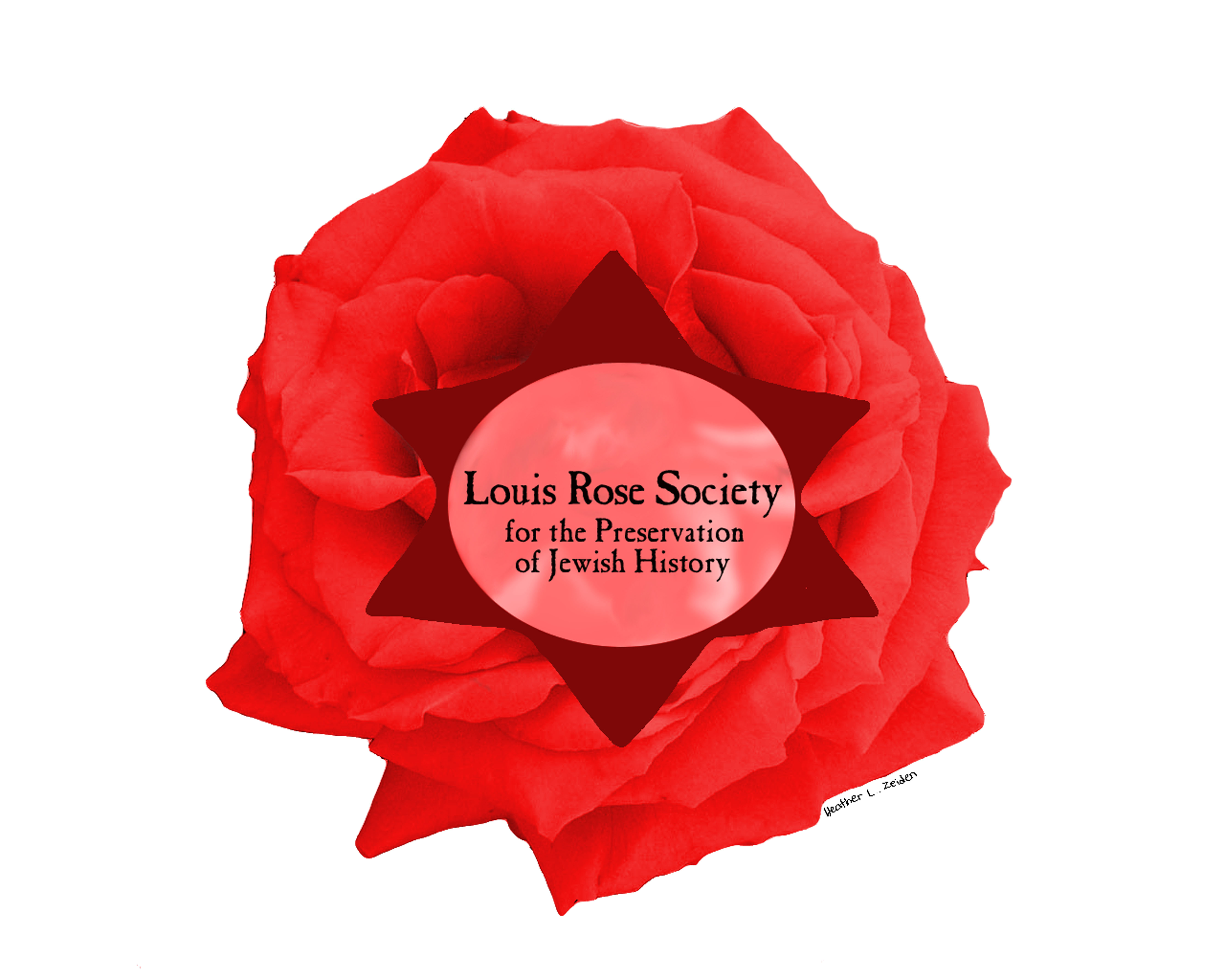 December
5, 2005
December
5, 2005 December
5, 2005
December
5, 2005
Newsletter No. 13: Louis
Rose Society for the Preservation of Jewish History
Rose Canyon Walk—A photo essay
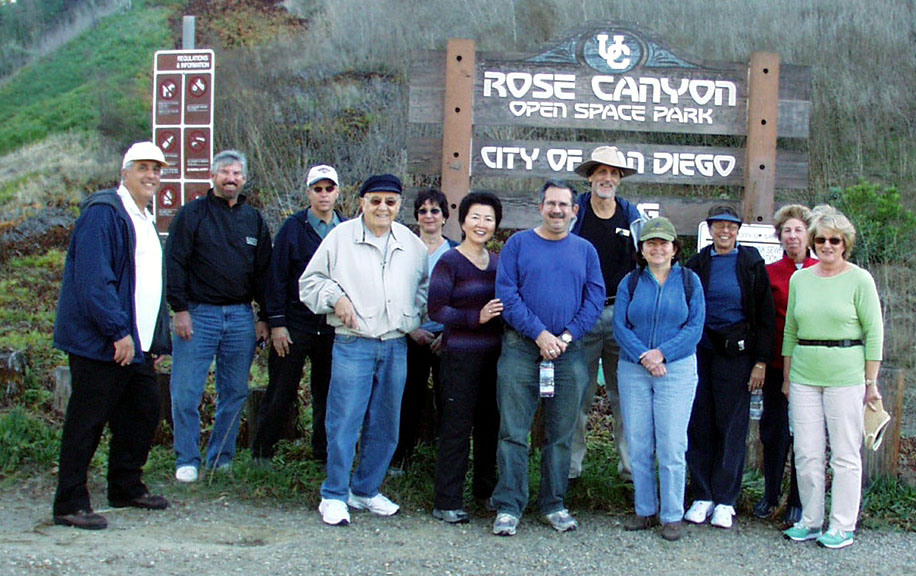
ROSE CANYON WALKERS—Exploring
the history of the Rose Canyon and the biography of the man for whom it was
named—Louis Rose—on
Sunday afternoon, December 4, 2005, were from left: Donald H. Harrison, Peter
Levine, Fred Gerson, Gerry Greber, Roben Gerson, Miyo Reff, Mitch Reff,
our guide and LRS member Rick Kamen, Ruth Kaplan, Susan Buxbaum, Marti O'Hara
and Judith Newman. We entered the canyon from Genesee Avenue,
across the street from University City High School. {Nancy E. Harrison photo)
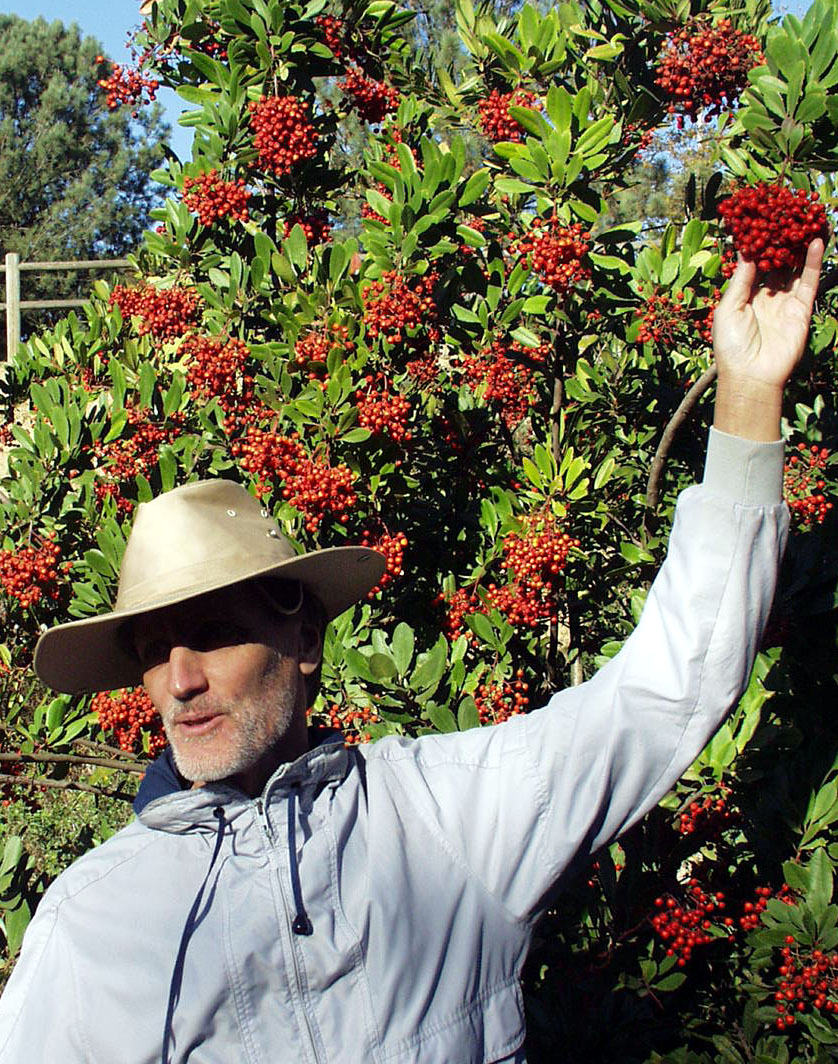
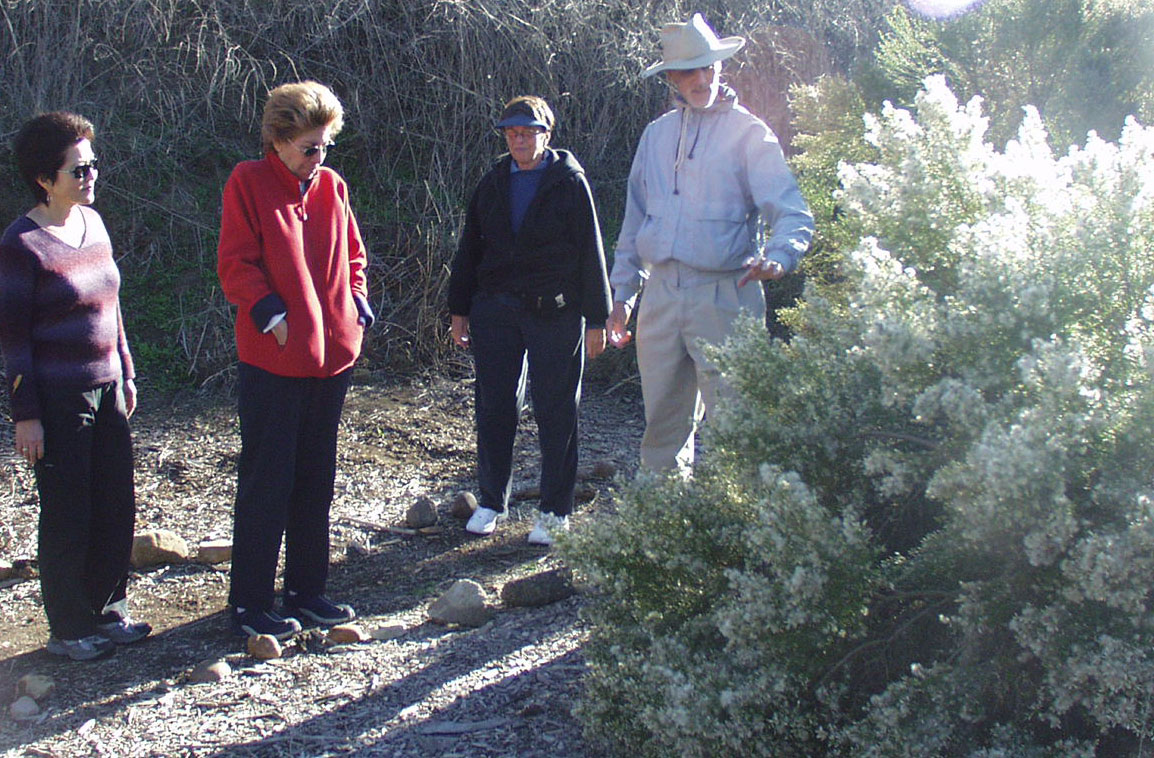
DISTRIBUTION SYSTEMS—Rick Kamen, a writer of "Heirloom
Stories" who volunteers as a docent at Torrey Pines State Park and at
the Museum of
Man, says the toyon
berries—often called Christmas berries because they come out in profusion
during the winter—like most fruits are edible. He
explained that nature
intends fruit to be eaten by animals, which in turn distribute the seeds in
their manure. The toyon is part of the rose family of plants—characterized by having five
petals on its flowers and many stamens within the center of the flower.
Cultivated roses have more petals but it's
due to a genetic mistake. Nature would correct that in a few generations if we
gave her a chance. Apples and strawberries also are part of the
rose family
—which is one of the largest families in the plant world., Kamen
said. At right, he pointed out the chaparral broom, which, when a wind came up, made
it
seem as if our group was walking through a snow flurry. The light white seeds were blown from the bush to the ground where those that landed near
a
proper water source could germinate. An oddity about this particular species, according to Kamen is that male and female chaparral brooms are
separate
plants, both of which produce flowers to attract pollinating insects to serve as their go-betweens. Only the female variety, shown at right, produces
seeds however. {Donald H. Harrison photos}
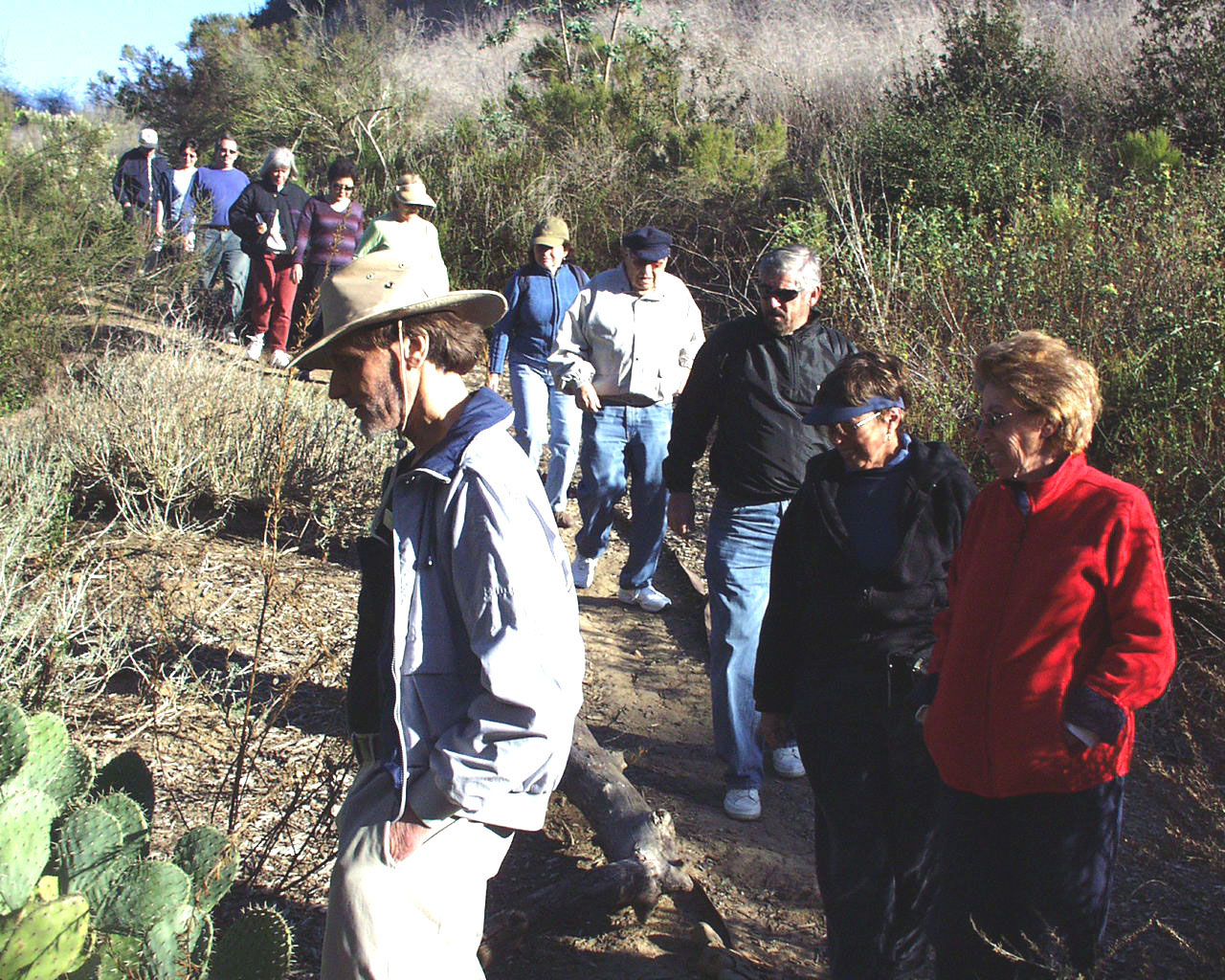
EASY TRAIL—As guide Rick Kamen studies a prickly pear cactus, hikers
queued behind him were Marti O'Hare, Susan Buxbaum, Peter Levine, Gerry
Greber, Ruth Kaplan, Judy Newman, Miyo Reff, Nancy Harrison, Mitch Reff, Roben
Gerson and Fred Gerson. Kamen lectured that every plant needs
to do things: gather resources (water, nutrients, sunlight) and protect
itself. Spines are the way the cactus defends its pads—necessary to
produce
chlorophyll—from being eaten by animals, Kamen explained. The pear or
fruit of the cactus, like other fruit, is edible. Kamen says he wears
heavy
gloves to pick the pears, then puts them into the freezer, which breaks the
cells. He brushes off the spines with a brush under running water, then lets
the cactus pearsthaw in his refrigerator. They produce a syrup, which is as sweet as
candy, he said. {Donald H. Harrison photo}
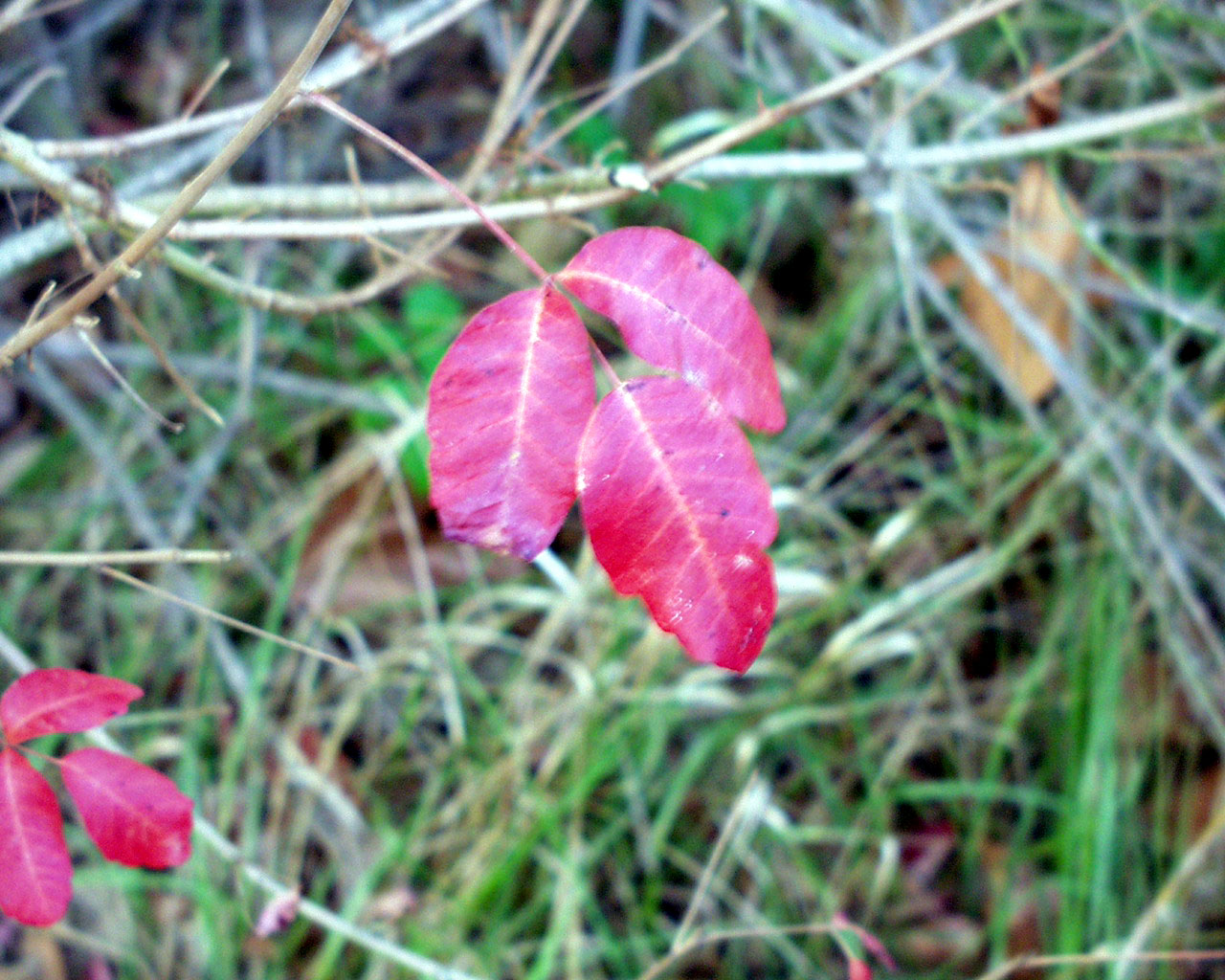

POISON OAK, MISTLETOE— Toxicity within the leaves is another defense
mechanism employed by such plants as the poison oak, pictured at
left. Whether the leaves are green or red, as shown, Kamen said, they are
easy to recognize because they grow in threesomes in which "two are
kissing and one is running away." The leaves start green, but lose
their green-ness in the fall as chlorophyll is reduced, thus showing the
underlying red color. At right, the green mistletoe is a parasite plant
which gains its nourishment from the cells of the host tree. Kamen
explained
that after eating a mistletoe berry from another plant, a bird flew to
this tree and defecated the seeds into a nook, where they were able to push
roots
into the host tree. {Donald H. Harrison photos}

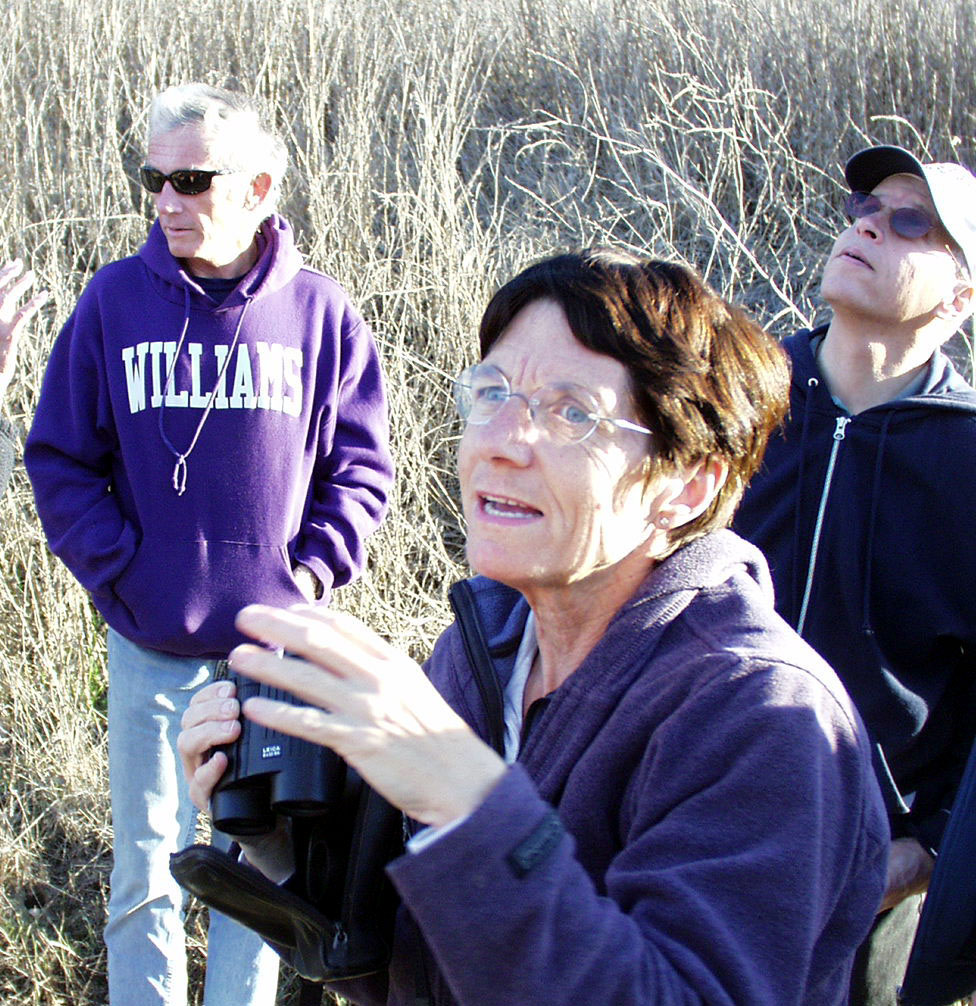
Buckwheat, birdwatchers—Two stories of rattlesnakes
were told during the Rose Canyon walk. Reading selections from his book, Louis
Rose: San Diego's
First Jewish Settler and Entrepreneur, Society co-founder Donald H. Harrison
told how Sophia Fisher—a neighbor of Rose's in Rose Canyon—died from a
rattlesnake bite, presumably in a part of the canyon close to where our
group was walking. Kamen commented that the Fishers, like Rose, were
Europeans (Germans) and didn't appreciate the snakes in the way that local
Native Americans (Kumeyaay) did. Holding a buckwheat in his hand, Kamen
explained how the Native Americans appreciated rattlesnakes near their grain baskets to
guard against mice, which otherwise would eat the food stores. They wove
pictures of
rattlesnakes into their baskets to show their appreciation—perhaps hoping the
images would have an effect similar to that of a scarecrow. Rattlesnakes
rattle to
warn humans to stay away, Kamen said. The snakes really don't want to use
their poison on animals they can't swallow whole, and only strike people to defend
themselves, Kamen explained. In the course of the discussion, Debby Knight, who had
been watching the interactions of red-tail hawks, a red-shoulder
hawk, ravens and kites, stopped to listen; introducing herself as president of the Friends
of Rose Canyon, a group organized to protect the nature
preserve. Behind her are her husband, Charlie Pratt, in the Williams sweatshirt, and LRS member Fred Gerson.
{Donald H. Harrison photos}